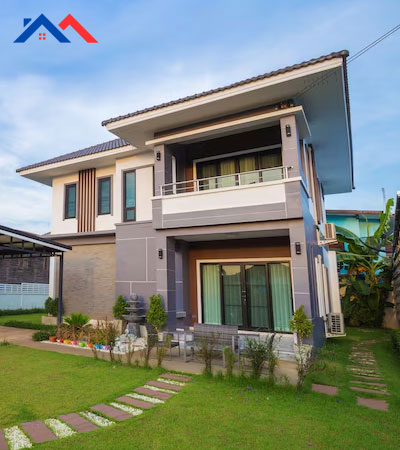Family Houses
What Are Family Houses? A Complete Guide
Family houses, often referred to as single-family homes, are standalone residential structures designed to house one household or family unit. These homes offer privacy, independence, and space — qualities that make them highly desirable in the real estate market. Unlike apartments or duplexes, family houses do not share walls with other residential units and typically come with private yards or gardens.
Key Features of Family Houses
- Standalone Structure: A family house is built as a single, independent unit on its own land.
- Private Outdoor Space: Most family homes include a front and back yard or garden, suitable for play areas, gardening, or outdoor entertainment.
- Multiple Rooms: They usually have multiple bedrooms, a living room, kitchen, bathrooms, and sometimes additional features like a garage or basement.
- Greater Privacy: Since no walls are shared with other families, there is more peace and personal space.

Types of Family Houses
There are different types of family houses based on architectural design, size, and regional preference. These include:
Bungalows
Single-story homes that are ideal for families with young children or elderly members due to the absence of stairs.
Duplex Houses
A single building divided into two separate units, often for larger families living together with separate entries.
Villas
Luxury homes built with spacious layouts, often located in gated communities with high-end amenities.
Row Houses
Houses constructed in a row sharing side walls, offering a balance between independent living and community housing.
Advantages of Family Houses
Owning a family home offers numerous benefits:
- Long-Term Investment: Property value tends to appreciate over time, making it a smart financial decision.
- Personalization: Homeowners can remodel, renovate, and decorate their home as per their lifestyle preferences.
- Freedom and Control: There are fewer restrictions compared to renting or living in apartments with association rules.
- Safe Environment for Children: Private yards and extra space provide a safer environment for kids to grow and play.
Factors to Consider When Buying a Family House
Choosing the right family home involves thoughtful decision-making. Some critical factors include:
- Budget: Assess your affordability and factor in not just the purchase cost but also taxes, maintenance, and utility bills.
- Size and Layout: Evaluate the number of bedrooms, bathrooms, and overall layout based on your current and future needs.
- Neighborhood: Safety, schools, accessibility, and community facilities are crucial for family living.
- Resale Potential: Opt for areas where property value is likely to appreciate over time.
Why Family Houses Remain a Top Choice
Despite the growing popularity of high-rise apartments and gated communities, family houses continue to be a preferred choice for many. They offer a sense of permanence, freedom, and the emotional satisfaction of owning an independent space. In many cultures, owning a family home is seen as a significant life achievement and a legacy to pass on to future generations.
Trends in Family House Design
Modern family houses are now being designed with sustainability and smart technology in mind. Features like solar panels, home automation, open-plan living spaces, and energy-efficient materials are becoming increasingly popular.
Family houses are more than just structures—they are spaces where memories are made, and lives grow. Whether you're buying your first home or upgrading to accommodate a growing family, choosing the right family house can be one of the most rewarding investments of your life. Understanding the types, benefits, and buying considerations ensures you make a well-informed decision tailored to your family's long-term happiness and comfort.
